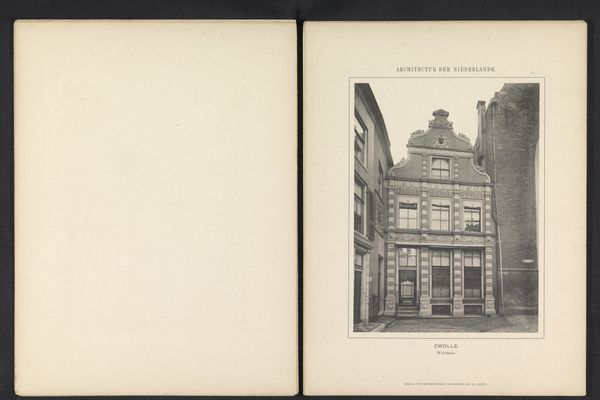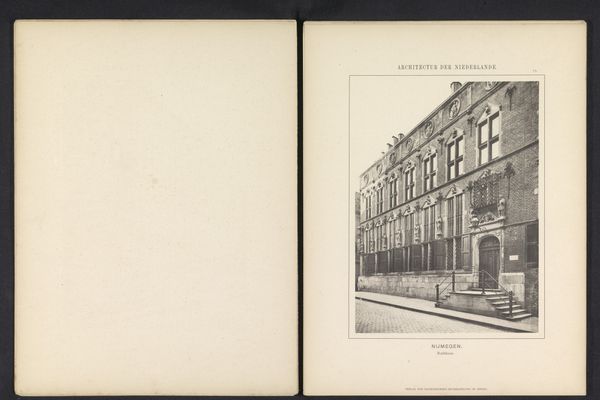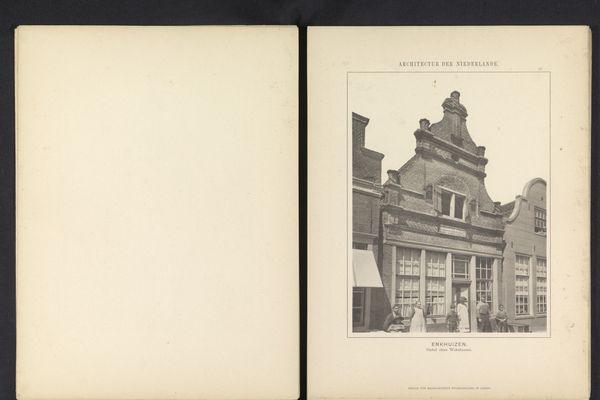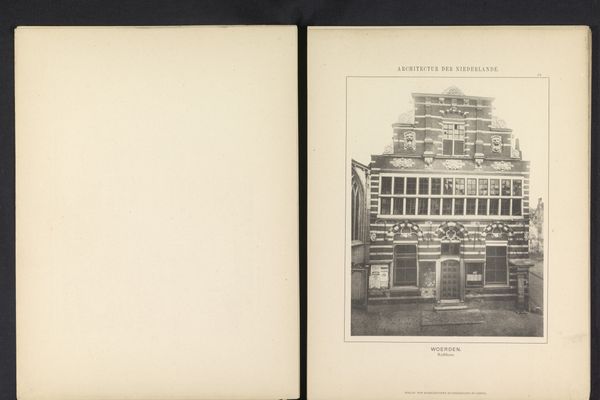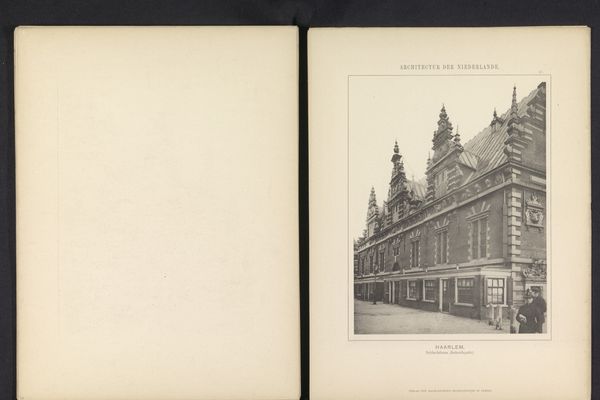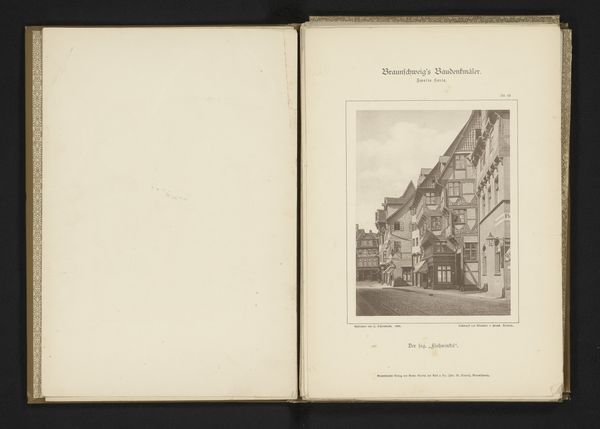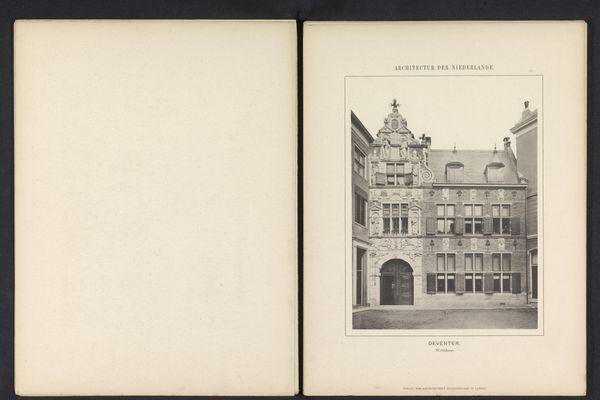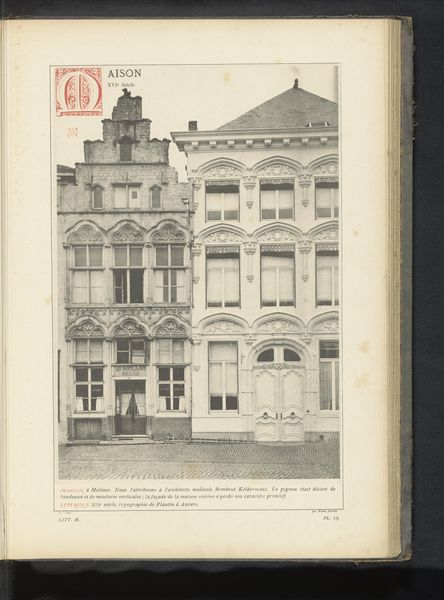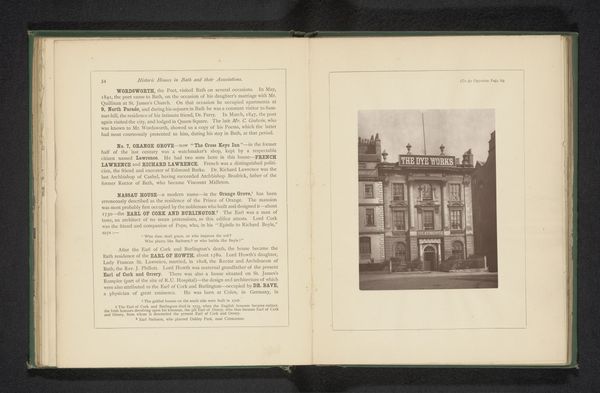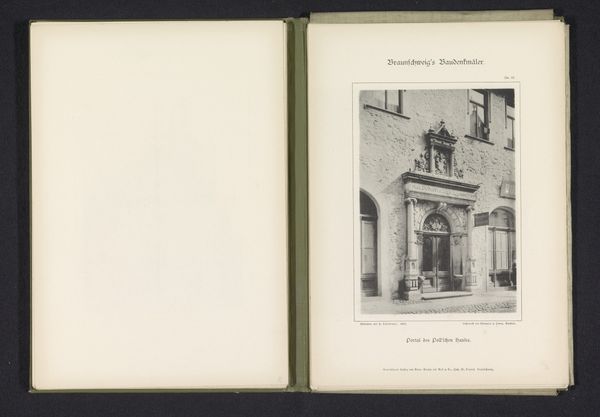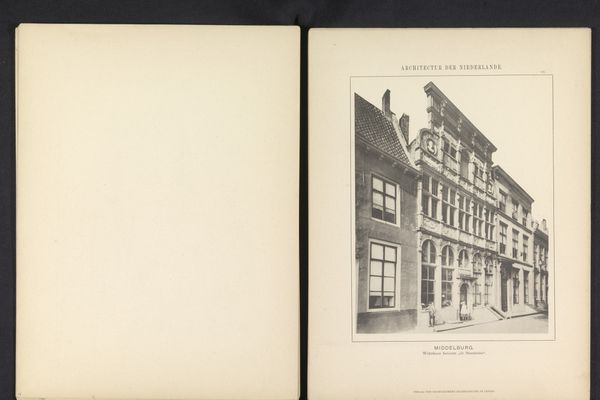
print, etching, photography, architecture
# print
#
etching
#
photography
#
cityscape
#
architecture
Dimensions: height 261 mm, width 199 mm
Copyright: Rijks Museum: Open Domain
Editor: We are looking at “Gezicht op het Stadhuis van Kampen,” which translates to “View of Kampen City Hall,” dating back to before 1894. The media includes print, etching and photography. It is currently at the Rijksmuseum. The building’s façade is quite striking with those repetitive windows, statues, and elaborate roofline. It feels both grand and slightly imposing. What strikes you most about its construction? Curator: Note the photographic and etched medium. Its subdued tonal range yields to precise articulations of surface texture, of stone versus brick. What semiotic weight do those textural variations carry? Is there any symbolic meaning? Editor: Hmmm. What do you mean by 'semiotic weight'? Curator: Each material evokes a sense. Consider how the rough texture of brick, captured in the etching, contrasts against the smooth finish of the stone detailing. This contrast directs our gaze to particular elements—perhaps highlighting areas of importance or symbolic value. Editor: I see. So the smooth stone might symbolize power or permanence, while the brick is just… everyday? Curator: Precisely! And observe the linear arrangement of the windows. Do the precise vertical and horizontal lines of their design enhance the perceived stability of the structure, giving a rigid frame? Editor: Yes, that certainly lends a feeling of solidity. Curator: Note also the roofline—an elaborate design drawing attention to that portion, indicating its semiotic significance? The cumulative effect speaks to a formal language of civic pride and enduring power, yes? Editor: I think I understand now. Paying attention to those qualities really changes how you see it! Thanks. Curator: Indeed. Nuance resides within the dialogue of form.
Comments
No comments
Be the first to comment and join the conversation on the ultimate creative platform.
